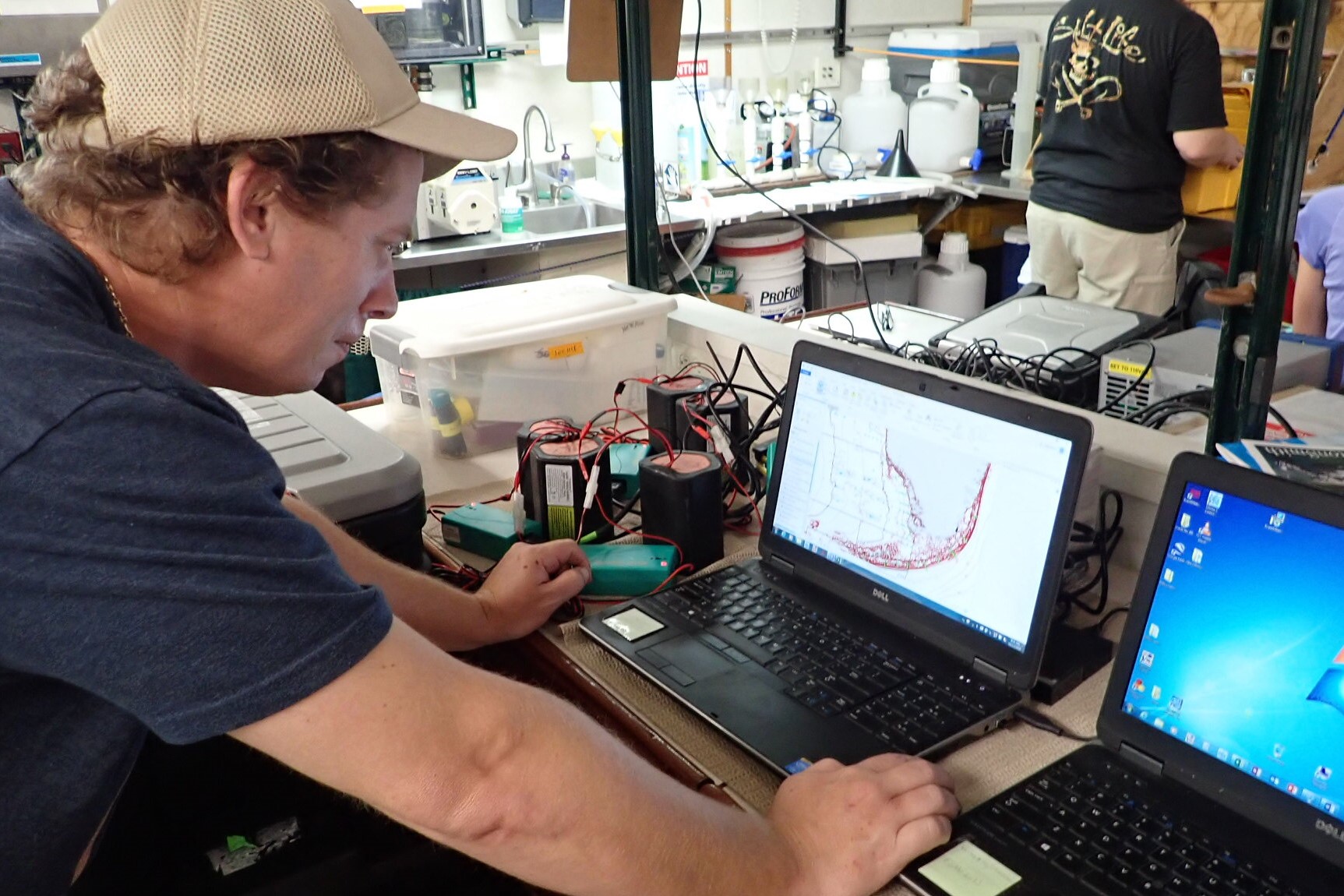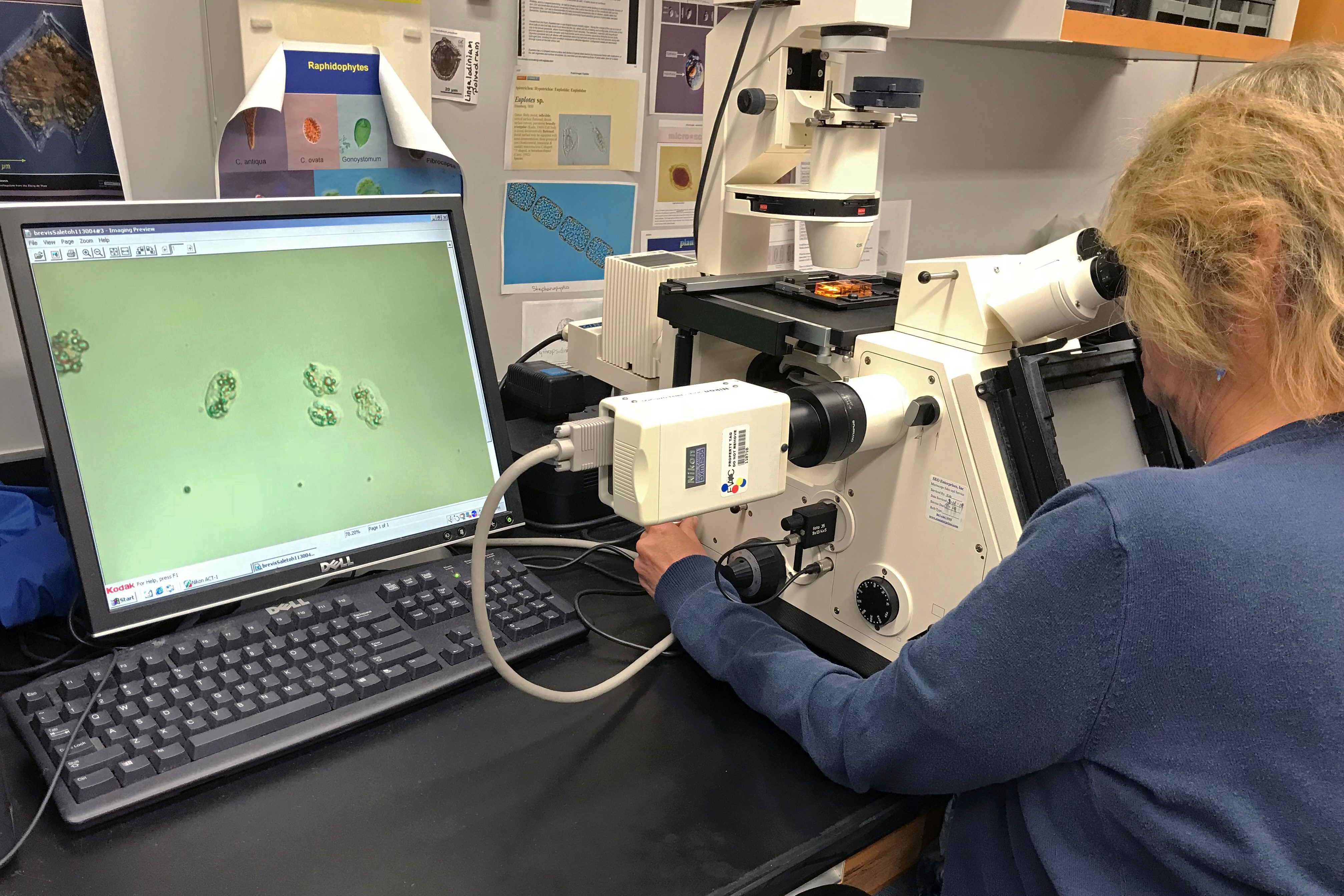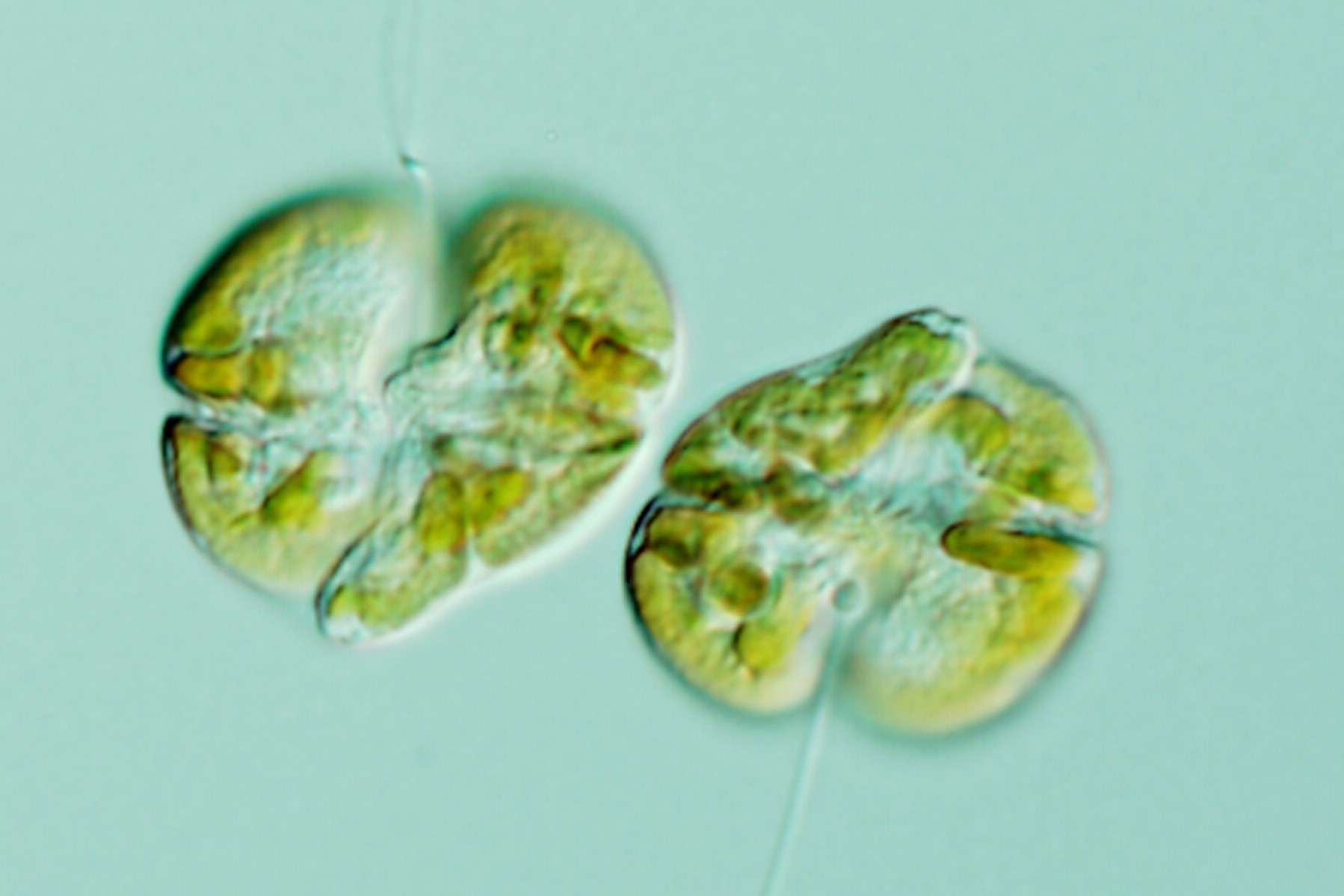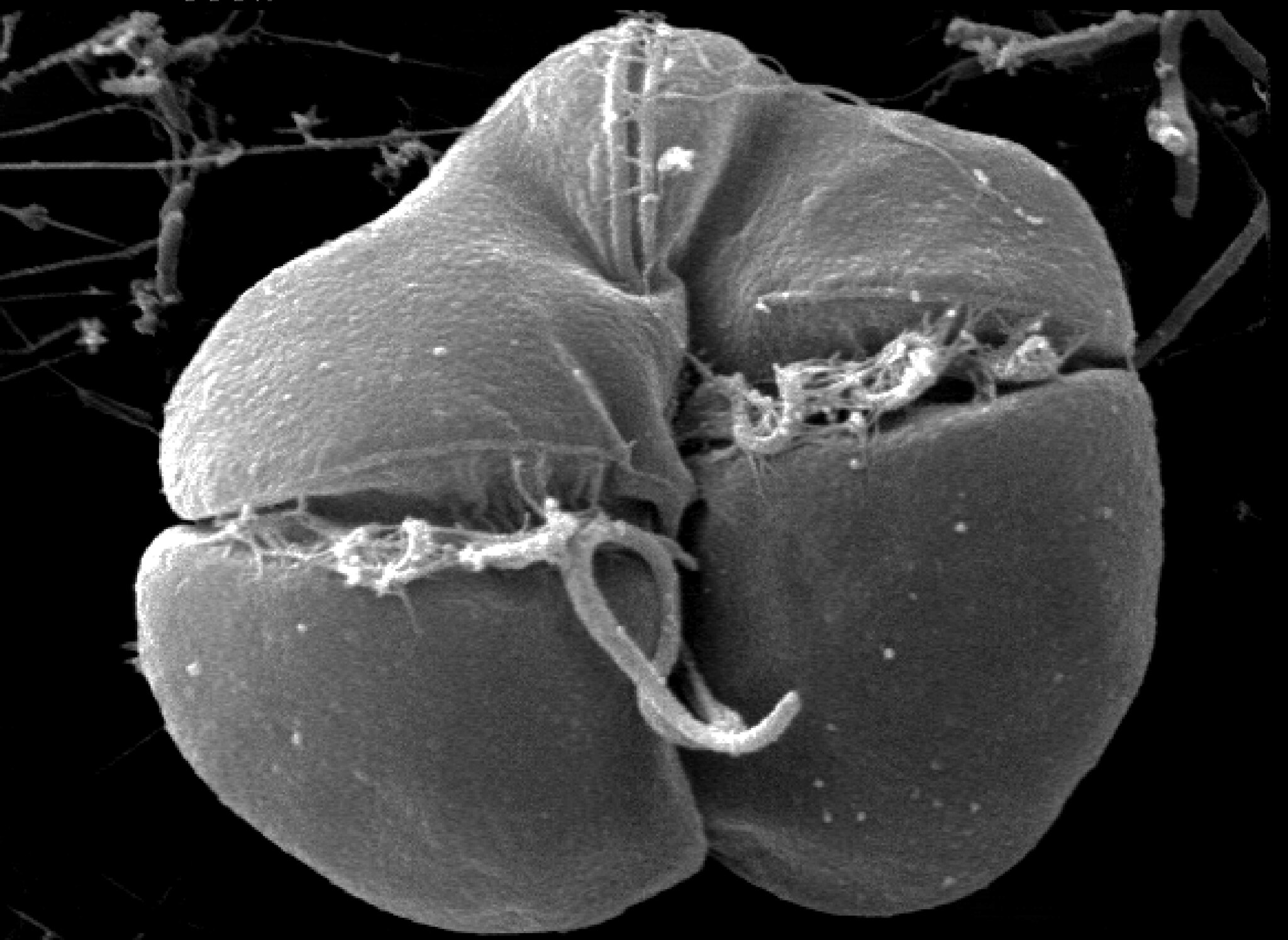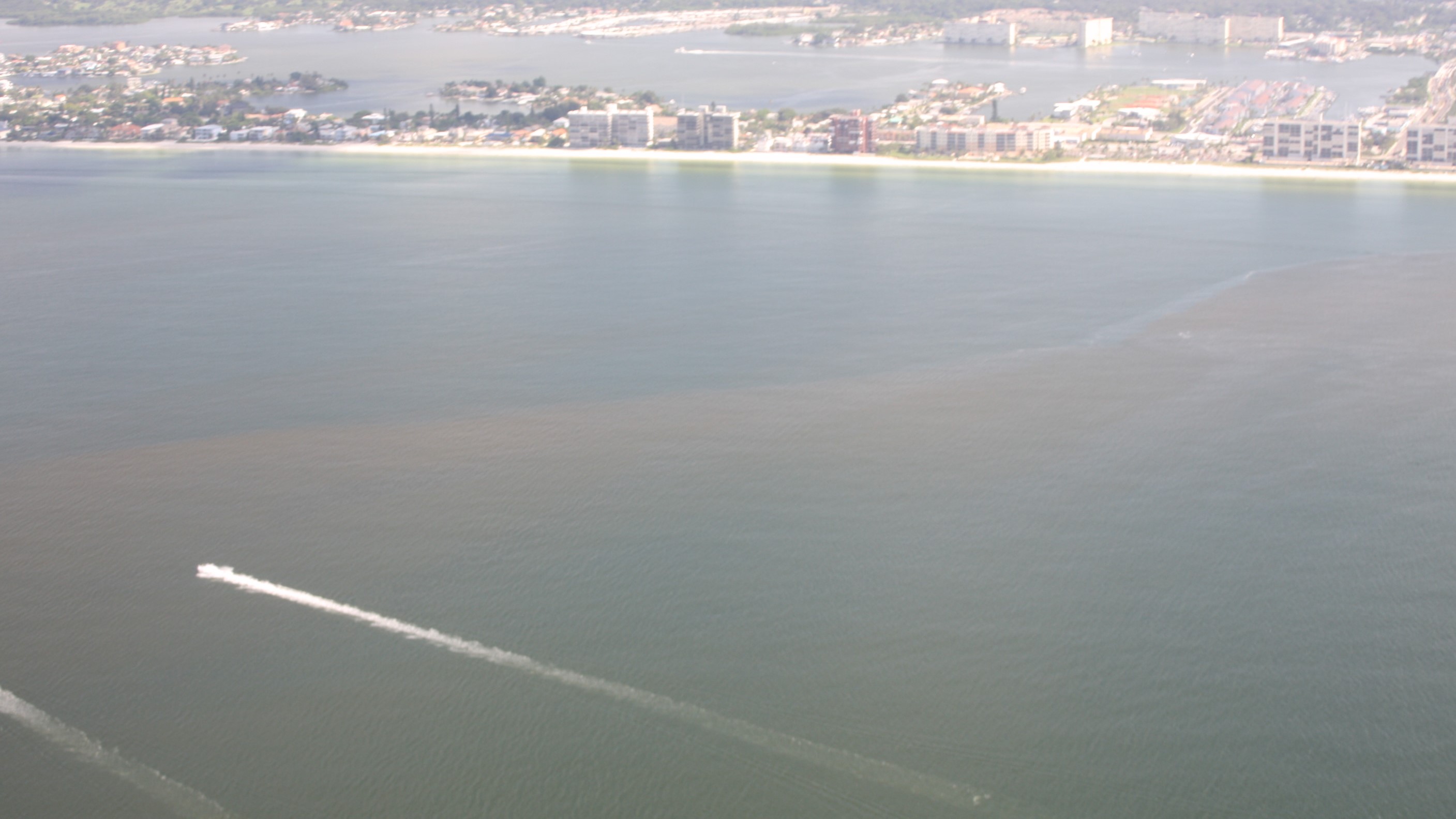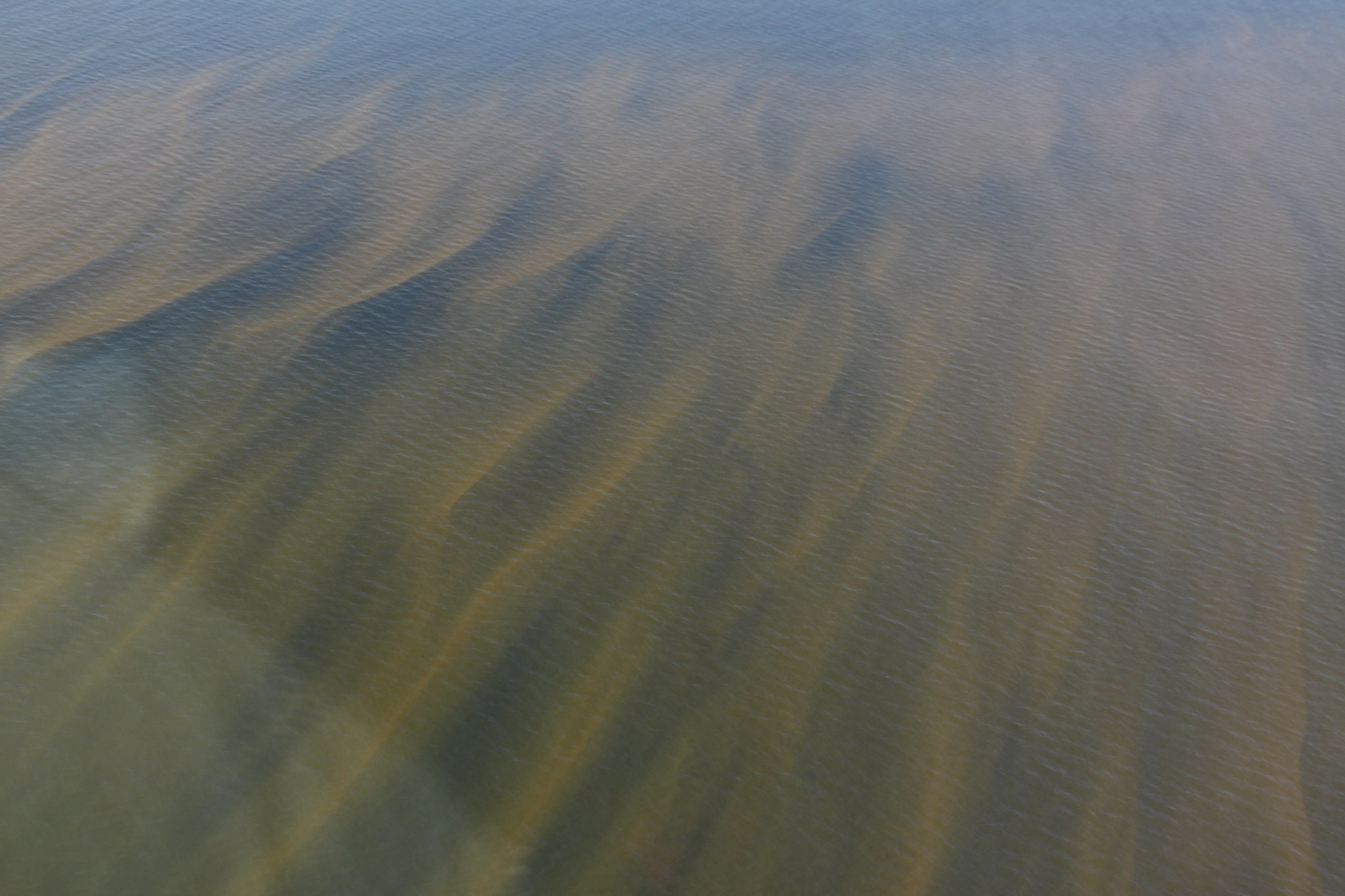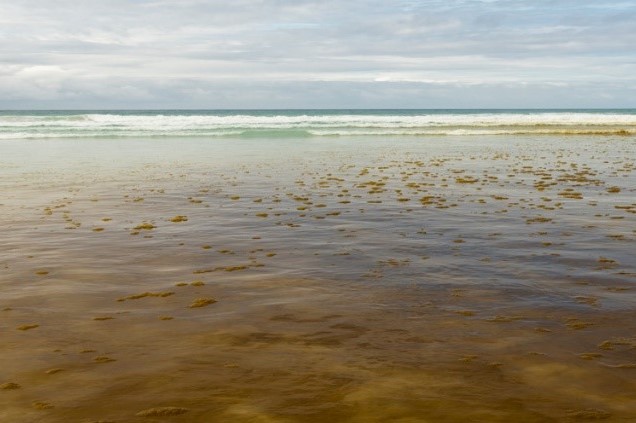Red Tide

Red tide is one type of harmful algal bloom that is caused by high concentrations of toxic dinoflagellates, microscopic algae. In Florida and the Gulf of Mexico, the alga that causes most red tides is Karenia brevis, often abbreviated as K. brevis.
At high enough concentrations, red tide can discolor water and give it a red or brown hue. Blooms caused by other algal species can also appear red or brown, but may also take on a green or purple coloration. Some algal blooms appear colorless.
Red tides in Florida often develop in late summer and early fall with their point of origin typically 10-40 miles offshore. The initiation of any specific red tide event is difficult to predict, but once the algal bloom is located, the movement of the bloom may be forecast using wind information and water current data. Some blooms may be carried into shallow coastal waters, including bays and estuaries. However, K. brevis cannot tolerate prolonged exposure to low-salinity water and seldom penetrate the upper reaches of an estuary.
If a red tide is transported by wind and currents to nearshore waters, the algae can use nutrients delivered from adjacent watersheds to fuel their growth and sustain the production of toxins with a broad range of negative impacts. Karenia brevis produces potent neurotoxins (brevetoxins) that can affect the health of both wildlife and people. For people, brevetoxins can cause respiratory irritation or illness if inhaled or neurotoxic shellfish poisoning if contaminated seafood is eaten.

Understanding Red Tide
Red Tide blooms occurs when elevated concentrations of Karenia brevis are present in the water. View this infographic to learn more about red tide, including potential effects.
FREQUENTLY ASKED QUESTIONS
-
What is red tide?
A red tide event occurs when there is a high concentration of toxic dinoflagellates in the water.
In the Gulf of Mexico, the algae that causes most red tides is Karenia brevis, often abbreviated as K. brevis. At high enough concentrations, K. brevis can discolor water and give it a red or brown hue. Blooms caused by other algal species can also appear red or brown, but many also appear green or purple. Some algal blooms may actually appear colorless.
Red tide events and other harmful algal blooms degrade water quality and harm Florida’s economy.
-
How does red tide differ from blue-green algae?
Blue-green algae blooms occur primarily in freshwater water systems, whereas red tides tend to originate 10-40 miles offshore. Although wind and currents can push red tides into nearshore waters, including bays and estuaries, the algae that cause red tides cannot survive in freshwater systems.
-
Where can I find out about red tide in my Area?
You can learn about red tide in your area by visiting the interactive statewide water quality map, or by visiting Florida Fish and Wildlife Conservation Commission.
Visit Statewide Water Quality Map Visit FWC
You can also subscribe to receive updates from Protecting Florida Together.
-
Is red tide dangerous?
Karenia brevis produces potent neurotoxins (brevetoxins) that can affect the health of both wildlife and people. For humans, aerosolized brevetoxins can cause respiratory irritation and/or illness if inhaled.
Finfish are safe to eat as long as they are caught alive and filleted. However, consumption of shellfish harvested from waters were red tide is present can lead to neurotoxic shellfish poisoning. It is not safe to eat clams, mussels or oysters from areas impacted by red tide.
-
Where can I find status reports and additional information on red tide?
Florida Fish and Wildlife Conservation Commission provides red tide related status reports, hotlines and additional information.
-
Where can I report health issues related to red tide?
To report health issues related to exposure to red tide, please call the Florida Poison Information Center at 800-222-1222.
-
Where can I report fish kills, diseased fish or fish with other abnormalities?
The Fish and Wildlife Health Group at the Florida Fish and Wildlife Conservation Commission's Fish and Wildlife Research Institute in St. Petersburg has established a toll-free, statewide, fish kill hotline at 800-636-0511.
The hotline allows the public to report directly to researchers the locations of fish kills and diseased or abnormal fish. Callers should leave a brief message about the event they are reporting, mailing address, and telephone number so FWC staff can call back if they need additional information is needed.
Report Fish Kills and Fish Disease
Please call FWC Alert at 888-404-3922 if dead marine mammals or sea turtles are observed.
Additional Resources
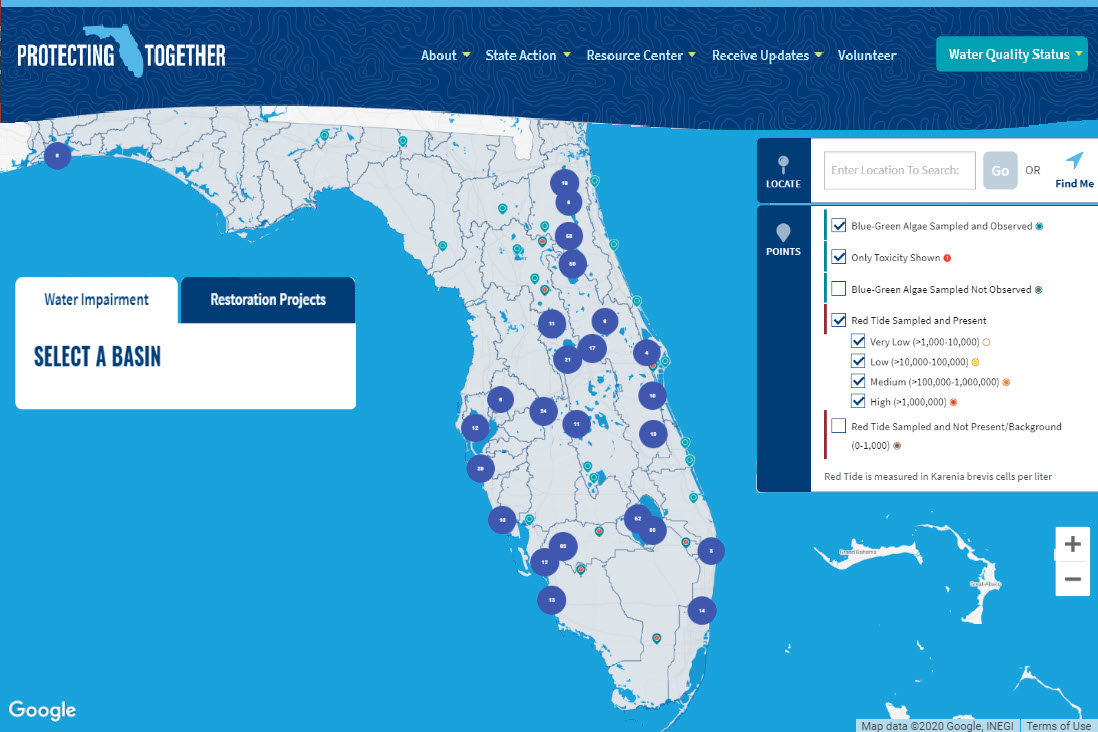
Water Quality Status Dashboard
The Protecting Florida Together Water Quality Dashboard delivers relevant water quality information statewide including blue-green algae, red tide and nutrient monitoring data. This map helps to ensure transparency and accountability with respect to our water quality data and its exchange with the public. Information for this map provided by DEP and FWC.
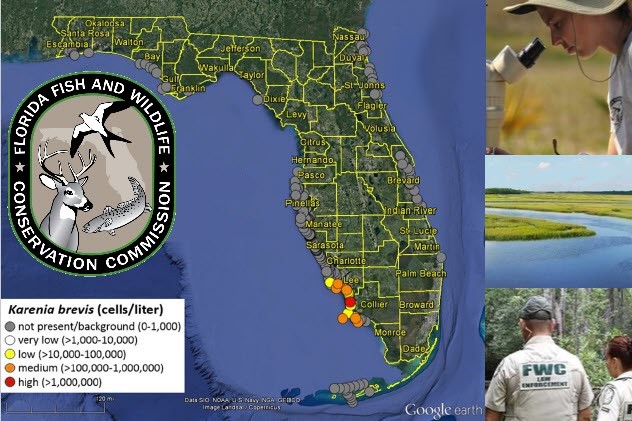
RED TIDE REPORTING
Red tide data displayed on the Water Quality Status Dashboard are identical to daily sample data on the Florida Fish and Wildlife Conservation Commission (FWC) site.
Both sites are updated daily. FWC provides additional information on red tide impacts such as fish kills and reports of respiratory irritation. Archived status maps and additional red tide resources are provided as well.
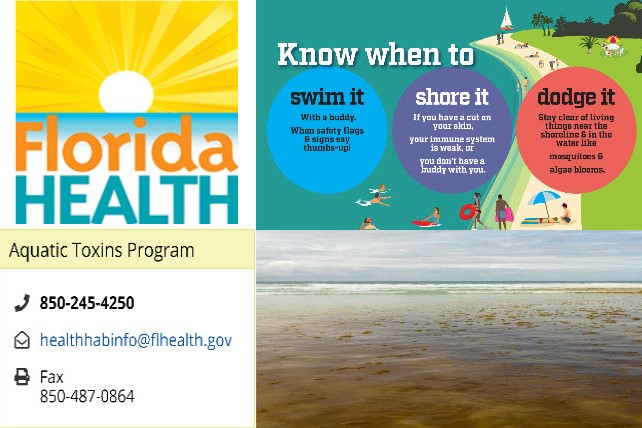
AQUATIC TOXINS PROGRAM
Staff at the Florida Department of Health’s Aquatic Toxins Program work every day to keep Floridians and visitors to our state safe. DOH works in coordination with many partners, including DEP and FWC, to ensure public health is protected.
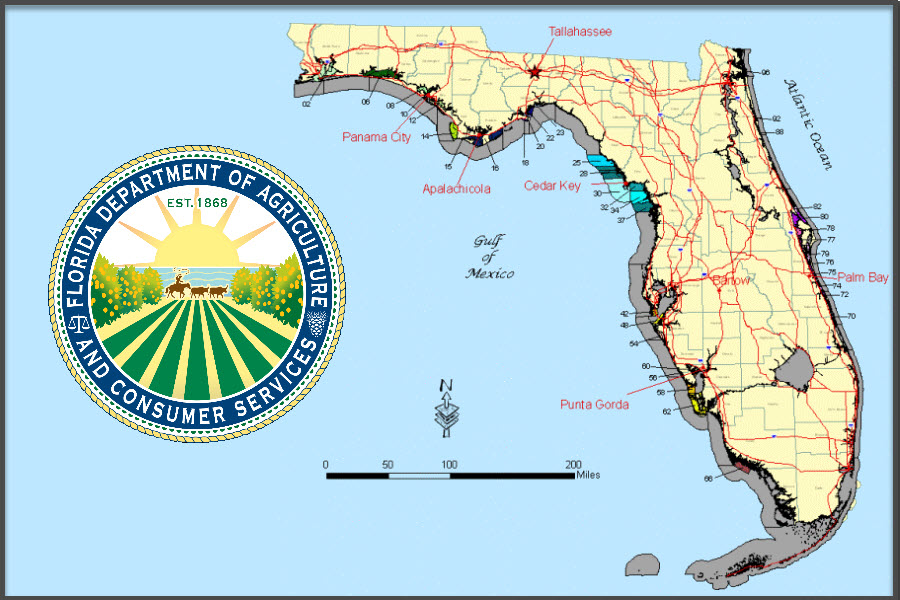
Shellfish Harvesting Status
To prevent neurotoxic shellfish poisoning, harvesting of shellfish is prohibited in an area when cell concentrations of red tide organisms exceed 5,000 Karenia brevis cells per liter. The Florida Department of Agriculture and Consumer Services provides information on the current status of shellfish harvesting.
